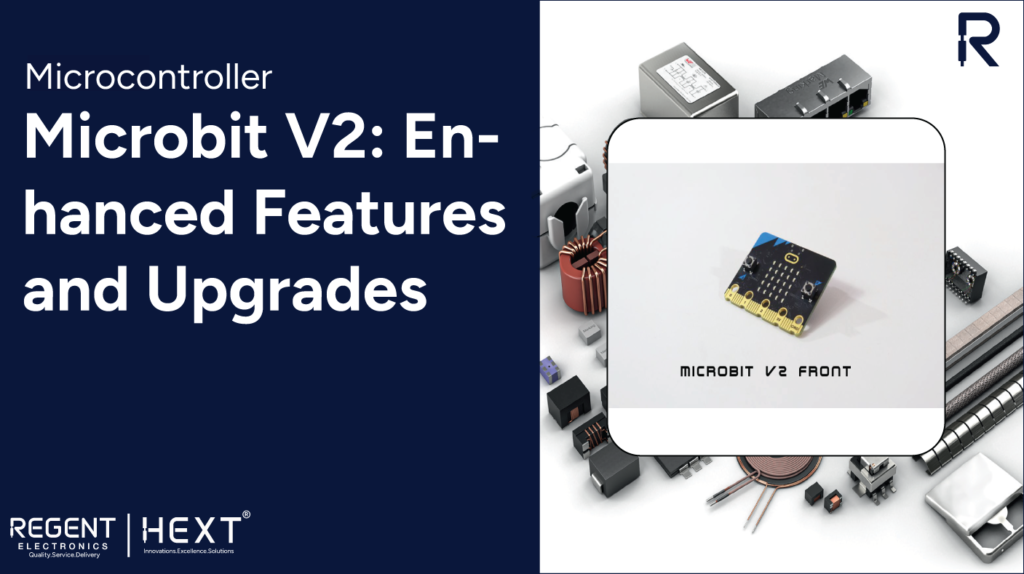
Microbit V2: Enhanced Features and Upgrades
Introduction This blog explores the latest advancements in Microbit V2, highlighting its new features, improvements, and differences compared to Microbit V1.
Introducing Microbit V2
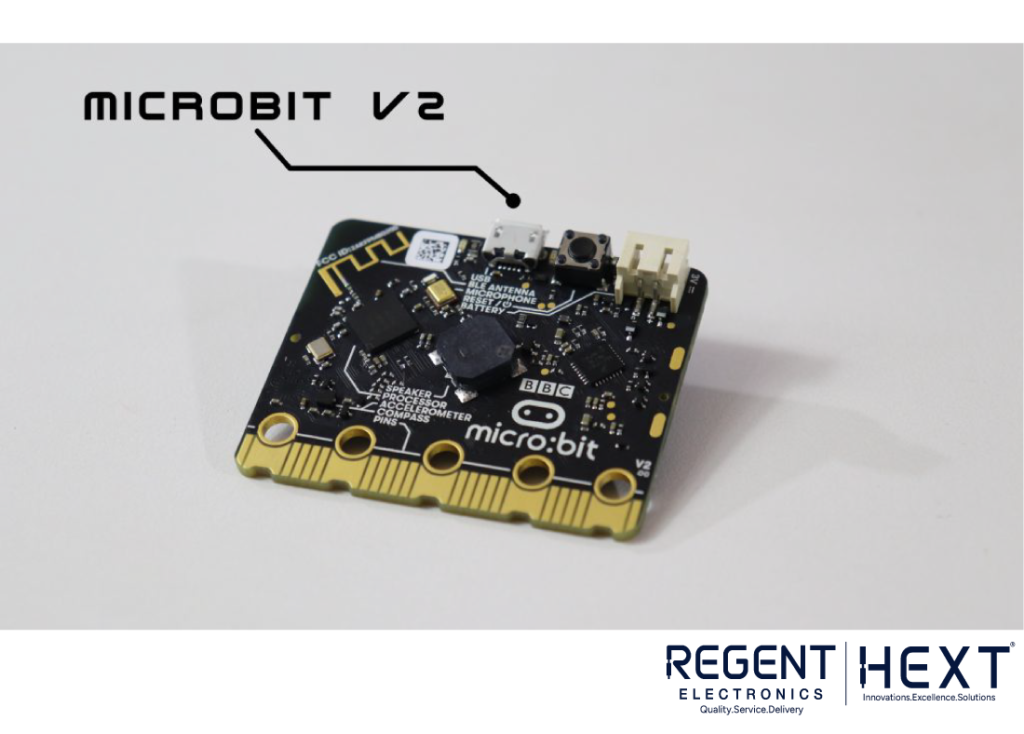
With the launch of the Raspberry Pi 400, Regent Electronics is also excited to introduce Microbit V2. If you’re familiar with the previous Microbit, you already know its capabilities. However, the upgraded version takes functionality to the next level, offering enhanced features for embedded systems, coding, and robotics enthusiasts.
Microbit V2 is designed for beginners and experienced developers alike, making it an ideal learning tool for students and hobbyists interested in digital technology.
What is Microbit V2?
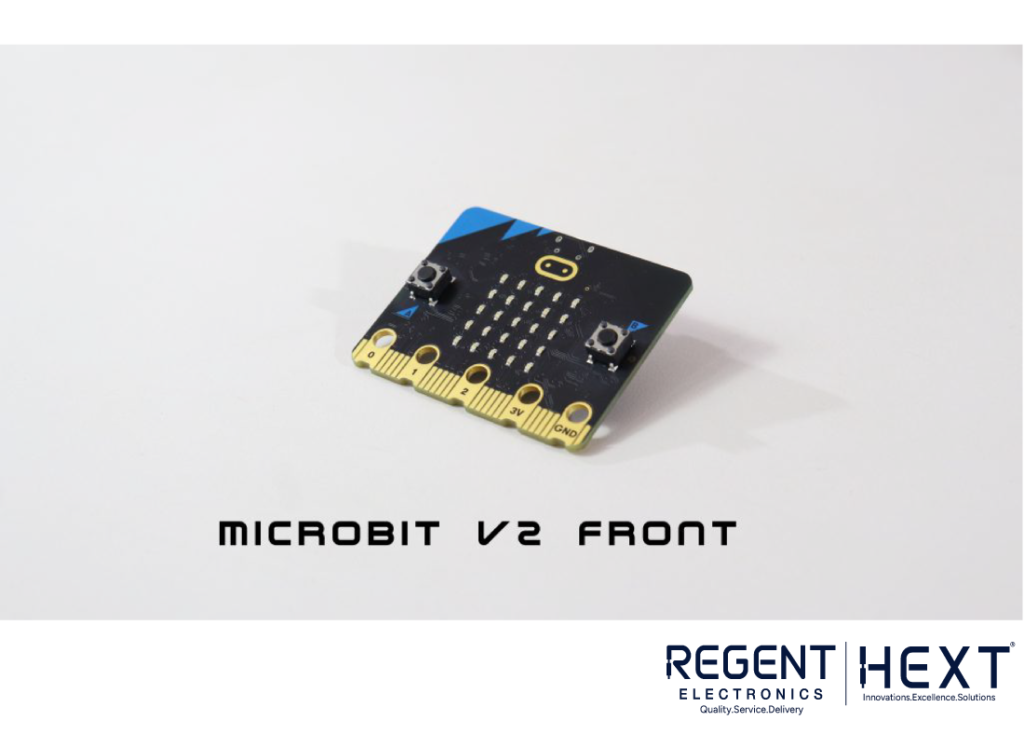
The BBC Microbit V2 is a compact, user-friendly pocket computer that enables creative programming and electronics projects. It is designed for users of all skill levels, from school students to seasoned coders. With its simple programming interface, Microbit V2 allows users to experiment with robotics, gaming, and various IoT applications.
Each Microbit V2 pack includes just the board, giving users the flexibility to customize and control their projects seamlessly. Despite its small size—about half of a credit card—it packs impressive hardware, including:
- A 25-LED matrix for displaying messages
- Two programmable tactile buttons
- A touch-sensitive logo for added interactivity
- An onboard speaker and microphone
- Bluetooth Low Energy (BLE 5.0) connectivity for device communication
Now, let’s explore what’s new in this version.
Microbit V2: What’s New?
The new version of Microbit retains the same shape, size, and fundamental functionality as its predecessor, ensuring compatibility with previous projects. However, it introduces several key upgrades based on user feedback, adding new capabilities to enhance its usability.
New Features Exclusive to Microbit V2
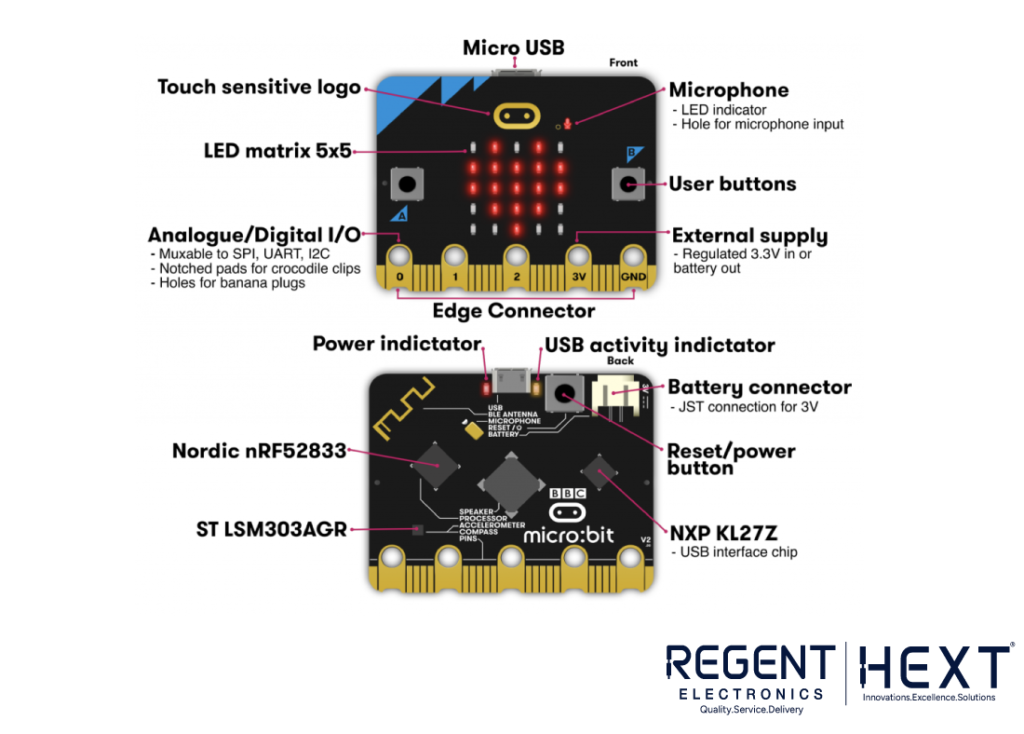
- Onboard Speaker – Enables sound generation for enhanced project interactivity.
- MEMS Microphone with LED Indicator – Allows sound input and voice-based applications.
- Touch-Sensitive Logo – Expands input capabilities for creative projects.
- Built-in Sleep/Off Mode – Helps conserve battery power when not in use.
- Enhanced Power Regulator – Supports up to 200mA for external accessories.
Microbit V2 Improvements
Several refinements make Microbit V2 more efficient and practical:
- Notched Edge Connector – Simplifies connections using crocodile clips and conductive threads.
- Power LED Indicator – Clearly shows power status for improved usability.
- Copper-Plated Antenna – Enhances the identification of the radio/Bluetooth component.
- Expanded Memory – Increased from 16KB to 128KB RAM and from 256KB to 512KB flash memory.
- Higher Current Capacity – Supports up to 200mA for external accessories, compared to 90mA in V1.
- Additional Input Options – Includes a touch sensor along with existing buttons.
- Power Management – Features a power LED and an on/off switch for better energy control.
Key Features of Microbit V2
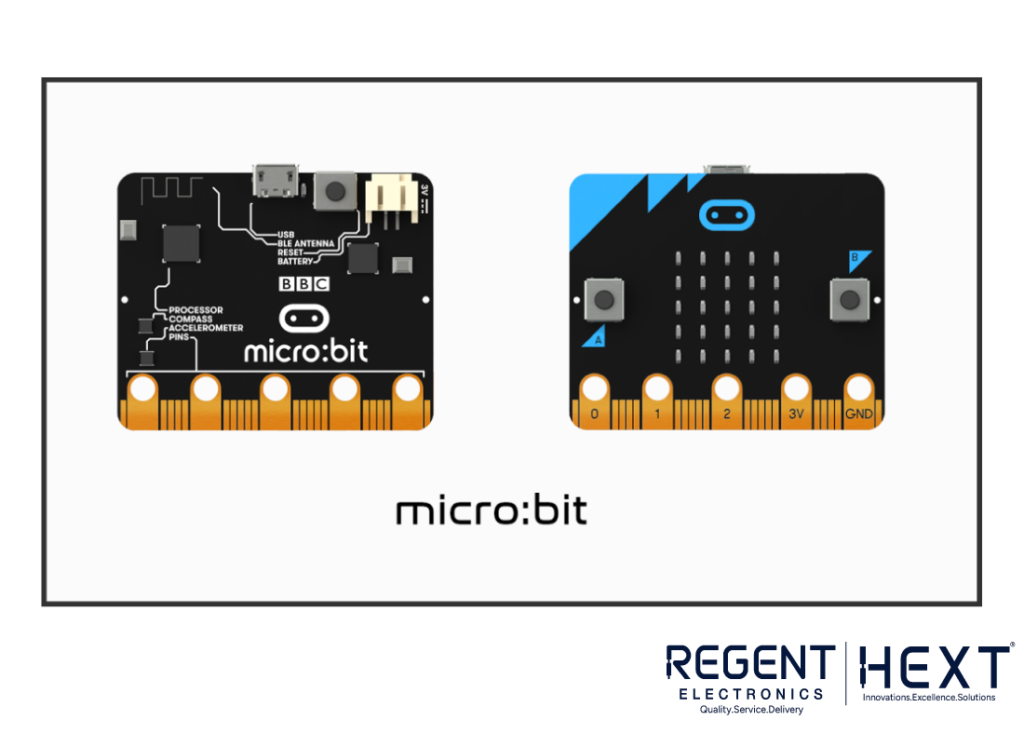

- 25-LED matrix for scrolling messages and displaying numbers.
- Accelerometer to detect movement and tilt.
- Compass for directional sensing.
- Bluetooth 5.0 for seamless connectivity.
- Two user-input buttons.
- Micro USB port for easy programming.
- Battery pack compatibility.
- ARM Cortex-M4 CPU for enhanced performance.
- Built-in speaker and microphone for audio applications.
- 20-pin edge connector for extended hardware interfacing.
Microbit V1 vs. Microbit V2: A Detailed Comparison
| Feature | Microbit V1 | Microbit V2 |
| Processor | Nordic Semiconductor nRF51822 | Nordic Semiconductor nRF52833 |
| Memory | 256KB Flash, 16KB RAM | 512KB Flash, 128KB RAM |
| Interface | NXP KL26Z, 16KB RAM | NXP KL27Z, 32KB RAM |
| Microphone | N/A | MEMS microphone with LED indicator |
| Speaker | N/A | Built-in speaker |
| Logo Touch Sensor | N/A | Touch-sensitive logo |
| Edge Connector | 25 pins (3 dedicated GPIO, I2C, SPI) | 25 pins (4 dedicated GPIO, PWM, I2C, SPI) |
| I2C Bus | Shared I2C | Dedicated I2C for peripherals |
| Wireless | Bluetooth 4.0 | Bluetooth 5.0 |
| Power | 5V Micro USB, 3V battery pack | 5V Micro USB, 3V battery pack, LED power indicator, power-off mode |
| Current Capacity | 90mA available for accessories | 200mA available for accessories |
| Motion Sensor | ST LSM303 | ST LSM303 |
| Software Compatibility | C++, MakeCode, Python, Scratch | C++, MakeCode, Python, Scratch |
| Size | 5cm x 4cm | 5cm x 4cm |
Conclusion
While Microbit V2 retains the core functionalities of its predecessor, its new features and refinements make it a more powerful and efficient development board. The addition of a speaker, microphone, touch sensor, and better power management enhances its usability, especially for young learners exploring coding and electronics.
Microbit V2 continues to fulfill its mission of making coding accessible and enjoyable for all. Whether you’re a beginner or an experienced developer, this upgraded board offers an excellent platform for creating innovative projects.
What are your thoughts on the new Microbit V2? Share your views in the comments below. Until next time, happy coding!
